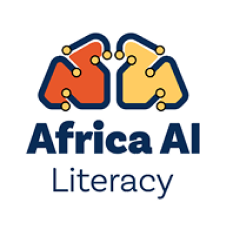This lesson underscores the importance of evaluating AI outputs for accuracy and ensuring ethical use of AI. You will learn how to review outputs for factual content and identify and avoid bias. In addition, the importance of considering privacy and security implications will be highlighted. By the end of this lesson, you’ll know how to apply your own good judgment to ensure AI is appropriate and beneficial.
Address AI limitations
In this lesson, you’ll explore strategies to help you address potential drawbacks of using AI. Consider the following limitations and read about strategies to address them.
Unfair bias:
AI tools are trained on information produced by humans, making them prone to any human biases that exist within the original data. For instance, maybe you request an AI tool to generate an image of a scientist for a class slideshow. If the images mostly depict white males, you might accidentally communicate that all scientists are white men. Human intervention creates more inclusive results.
AI sometimes produces a hallucination, which is any inaccurate or misleading output. Here’s an example: Perhaps you tell an AI tool that your sister’s name is Robin. There is also a breed of songbird called a robin. An AI hallucination may be represented as, “Your sister is a songbird.”
Here are some additional examples of conversational AI hallucinations:
-
An AI tool summarizing a news article might invent quotes or events that weren’t there originally.
-
When asked a complex question that requires real-world understanding, the AI tool might produce a response that sounds plausible but is ultimately meaningless.
These hallucinations are why it’s important to be aware of this limitation and to double-check information from conversational AI tools with trusted sources. To use AI tools responsibly, fact-checking is essential. One strategy is to request that the tool provide the sources of its information, or a bibliography, so you can investigate the reliability.
Many educators worry about irresponsible use of AI, as it can lead to plagiarism and hinder the learning process. When calculators became more prevalent in schools, there were similar concerns about the potential for students to use them as shortcuts, rather than truly understanding the material. This caused a shift in how math was taught, putting more emphasis on showing work. By understanding what AI tools can and can’t do, educators will be prepared to use AI to support their practice.
Privacy and security:
Consider responsible use
While AI can offer many benefits, it’s important to also consider its limitations.
With these challenges in mind, the following are some suitable situations for genAI and issues to be aware of:




